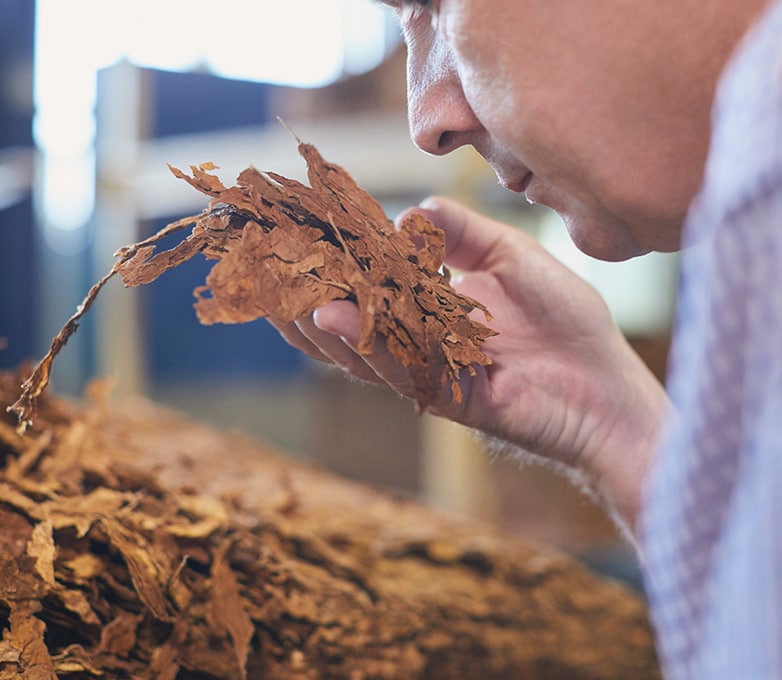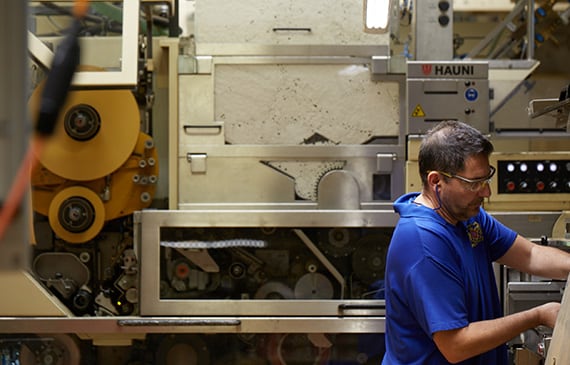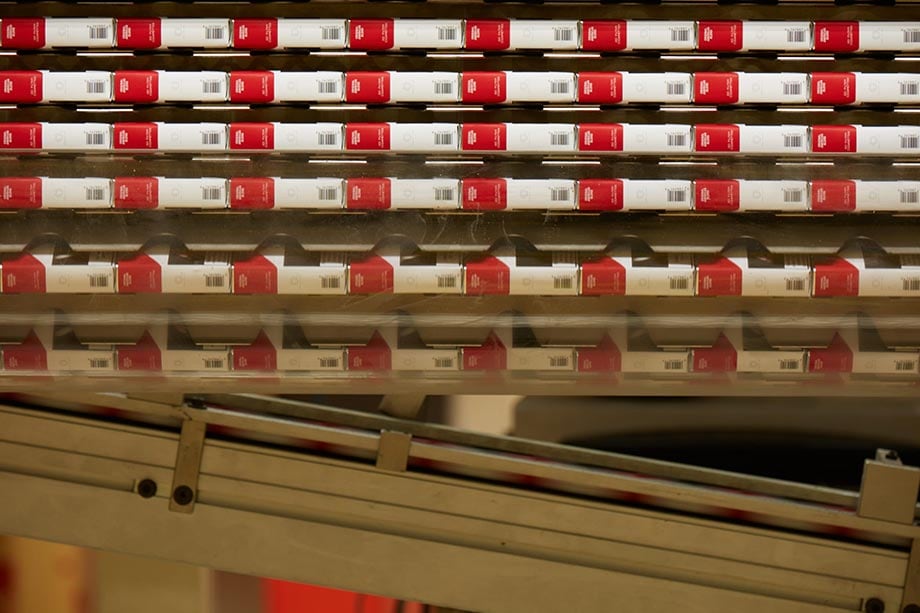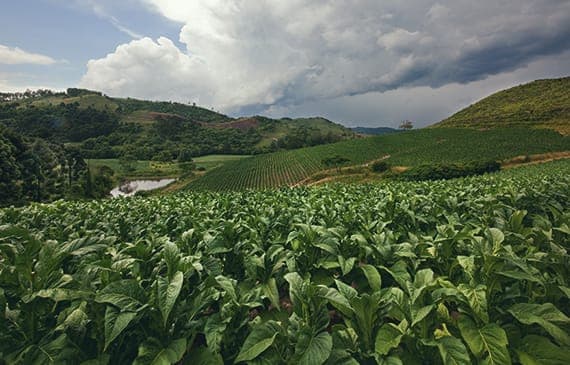- Tobacco: This is selected according to specific blends and leaf grades to maintain the consistency and distinctive character of each brand.
- Ingredients: These are added to many of our brands to keep the tobacco moist, aid the manufacturing process, replenish natural sugars lost during leaf curing,
and contribute to each brand’s unique taste.
- Non-tobacco materials: These include cigarette papers and filters.
How are cigarettes made?
We operate 38 production facilities and produce over 700 billion cigarettes each year. Cigarettes are produced in factories around the world by processing the tobacco leaf, manufacturing the cigarettes, and preparing the final pack. Learn more below.

Processing tobacco leaf
Selecting the right blend of tobacco is the first step in cigarette production.
Our experts use their detailed knowledge to carefully select the blend of different tobacco types (such as Virginia, burley, and Oriental) and leaf grades used in our cigarette brands. The tobaccos are selected to maintain the consistency and distinctive character of each brand.
In addition to tobacco, which is the main ingredient in all of our cigarettes, other ingredients are added to many of our brands. Some ingredients, such as humectants, help maintain the moisture and pliability of the tobacco leaf. Others contribute to the taste and aroma of the tobacco leaf smoke.
After the tobaccos are blended together, the tobacco blend is finely cut before it passes through a drying cylinder to reduce moisture. When the moisture is at an optimal level, the blend is ready for cigarette manufacturing.

Manufacturing cigarettes
Cigarette manufacturing is a fast-paced, highly automated process.
Our machines can produce up to 20,000 cigarettes every minute.
The process begins by creating one long cigarette, called a “rod.” To produce the rod, a spool of cigarette paper up to 7,000 meters long is unrolled and a line of tobacco is placed on it. The cigarette paper is then wrapped around the tobacco, forming the rod.
Machines slice the super-sized rod into shorter pieces, inserting filters at both ends. The filters are then connected with “tipping paper,” the paper consumers see wrapped around the filter tip of a cigarette. Each shorter rod is then cut in half, producing two filtered cigarettes. The construction quality of each cigarette is checked at three different stages.

Preparing the final pack
Individual cigarettes are sorted into pack-sized groups and wrapped in foil to preserve their freshness.
The pack itself is assembled around the cigarettes. The finished pack is then wrapped with a protective film, which also serves to preserve the cigarettes’ aroma and freshness. The packs are placed in cartons or wrapped and placed into a master case for shipment.
Although the manufacturing of cigarettes is a highly automated process, it also requires careful supervision by our factory workers. Inspection of the leaf, blending, and quality assurance of the final product can never be left solely to machines.
Does PMI add ingredients to cigarettes to make them more addictive?
No. It’s nicotine that makes cigarettes addictive. Nicotine exists naturally in tobacco, which is the main ingredient in our cigarettes.
We make a wide variety of international and local cigarette brands, and sell fine-cut tobacco, roll-your-own, make-your-own, cigars, cigarillos, and pipe tobacco.
We disclose the ingredients that go into each brand of our combustible tobacco products. Use our ingredient finder to find out what’s in each one. Start by selecting the country where the product is sold.
Product ingredient finder

Monogram inks
Cigarette papers
Ingredients added to the tobacco
Tipping papers
Filter
Filter adhesives
Filter wrap
The information disclosed on the Philip Morris International website is provided on a voluntary basis by the company for consumer information purposes only. This information is not suitable for use by regulatory authorities. Philip Morris International provides official reports to regulatory authorities in line with applicable legal requirements.
We aim to strike a reasonable balance between providing detailed information about the ingredients in our products while protecting our proprietary recipes from disclosure to competitors or counterfeiters. This is why we merge similar product portfolios of different markets together. In this case, the merged markets, grouped by region, are clearly indicated when navigating the section “Components” or the section “Added ingredients.” The “Ingredients in a specific brand” section remains market-specific.



